The post After Trekking The Jordan Trail, Nothing Was The Same appeared first on The Expeditioner Travel Site.
]]>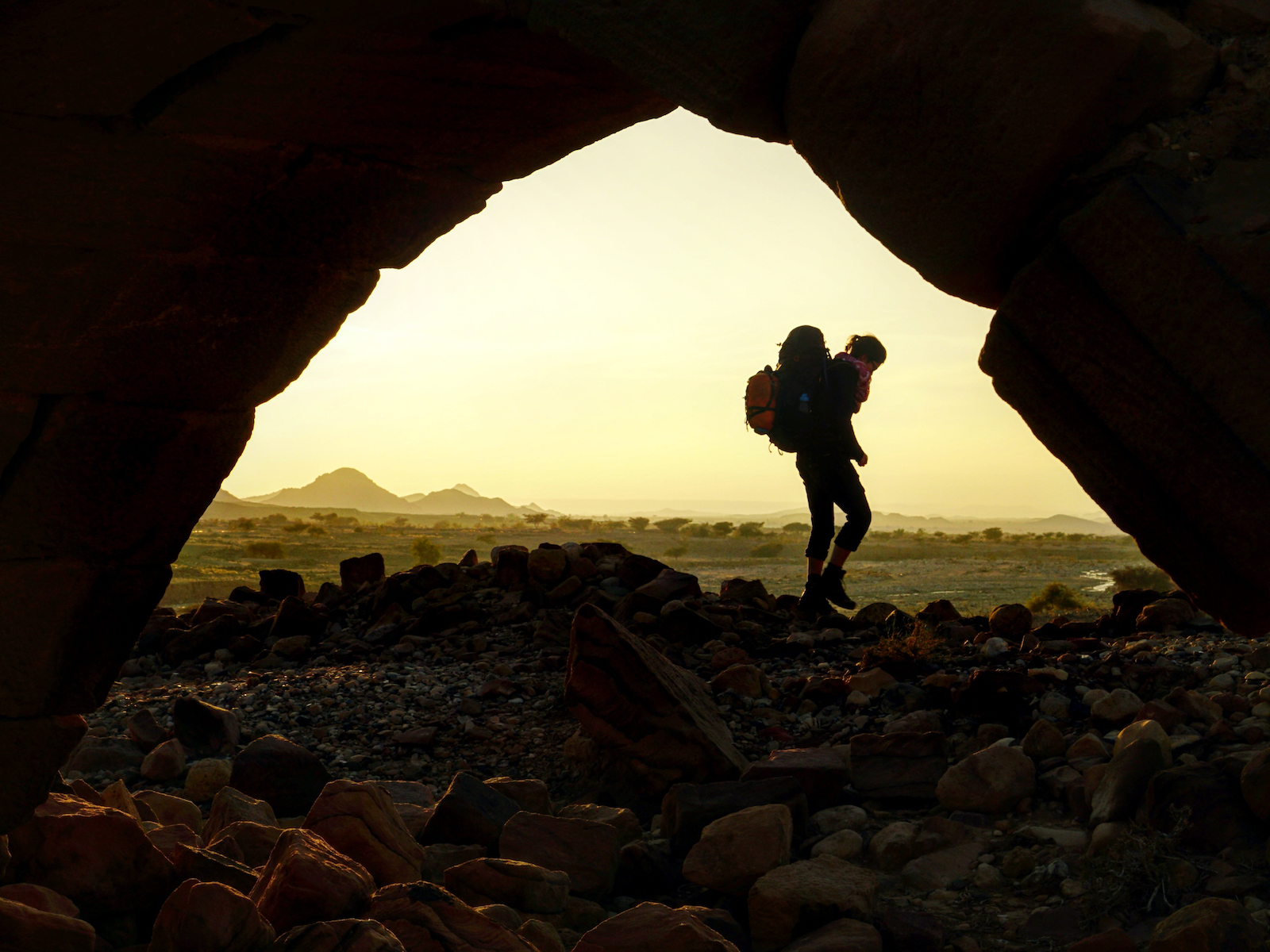
My friend Jordan was up to his calf in water before we saw the man. The rush and spit of the river meant that we could not hear what he was saying, but from the wide frantic waving of his arms the meaning was clear. As we climbed out of the cut the engorged river had made into the soft winter soil, his voice became clear.
“No, No!” he called, striding over the slippery mud towards us. “Over!”
He pointed behind him where there must be a bridge. “Here, no,“ he broke off, making a sweeping gesture with his arms and a whooshing sound. His face, cracked and brown like the dried mud on the riverbank, was furrowed in what was clearly exasperation. What were these two foreigners doing trying to ford a stream in December in rural Jordan?
As we followed him back towards the indicated bridge, his face cleared. “Drink Tea?” he asked, gesturing to his tent. It was the second time we had been asked in so many hours, so we declined in favor of continuing our hike. We thanked him as graciously as we could for him likely was saving our lives, which he waved away with a shrug before ducking back into the warmth of the shelter, a black and white patterned goat hair tent, like so many that dotted the area.
I had no answer for the unasked question of what we were doing there. We had followed a GPS track through the mountains and facing a stream, assumed we were meant to ford. But as to why we were in rural Jordan with little Arabic and following a shepherd across a muddy field in search of a bridge? It’s a longer story.
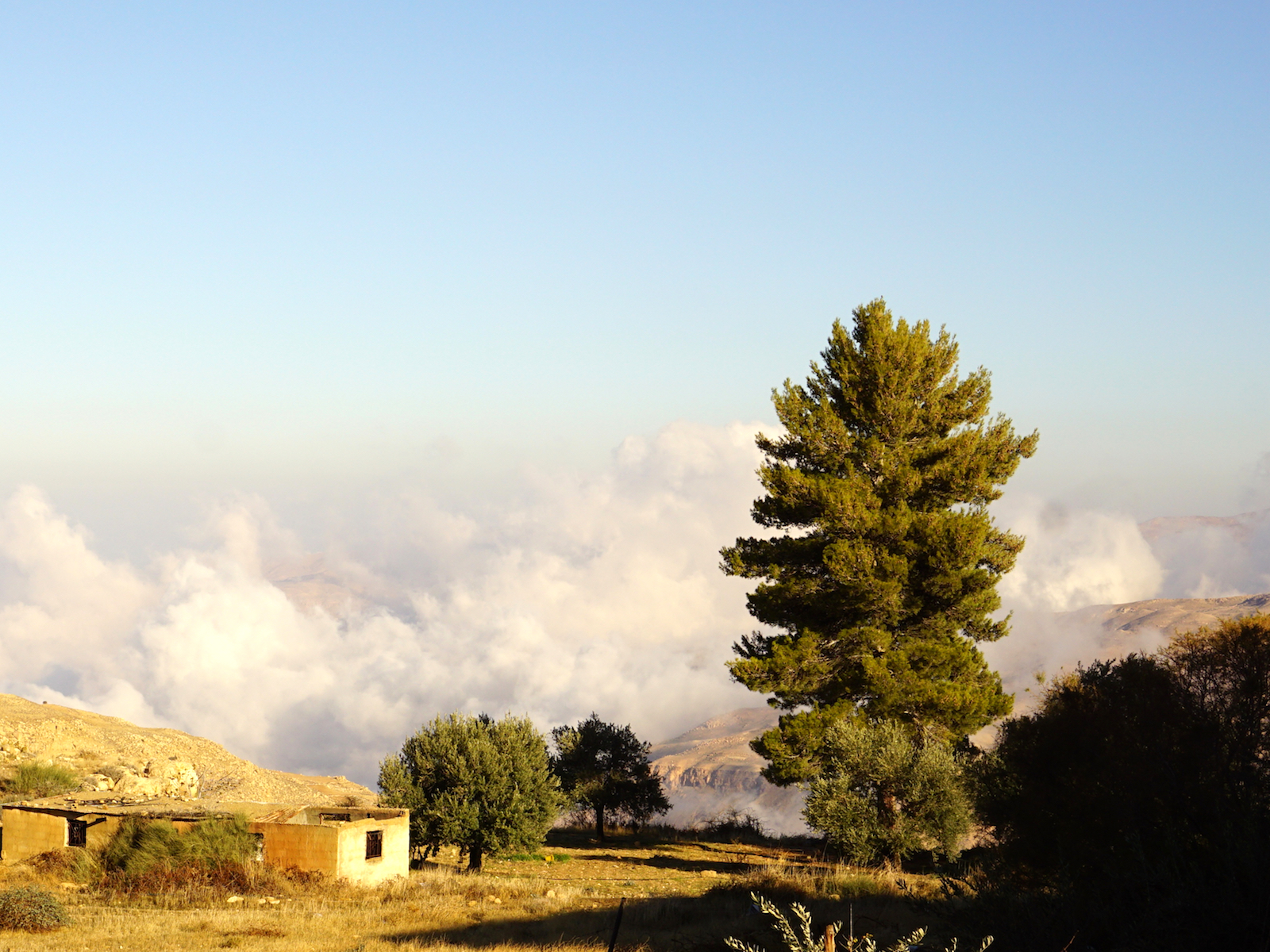
From the web site, the Jordan trail appears to be a popular and well organized trek, covering 370 miles running from the north of Jordan to the Red Sea in the south. Stunning photos of olive groves, dramatic mountains and deserts seem to promise adventure along a well-formulated route — with full GPS available online. The U.S. Ambassador to Jordan recently took a stroll along one segment of the Jordan trail and the sun and smiles on her Instagram page seemed to promise an authentic and rewarding experience. In mud up to my knees, halfway down a cliff with no idea how to proceed, by day five I had a slightly different impression of the Jordan trail.
It would be wrong of me to imply that the trail’s web site is false advertising, as it does provide walking notes and GPS routes for the part of the trail running from Umm Qais in the north to Aqaba in the south. Assuming basic knowledge of topographic navigation and modicum of fitness, the stages suggested are doable and varied, carrying the through-hiker past the best of Jordan’s varied ecosystems: rolling olive-covered hills cut by dramatic fog-shrouded valleys to the north, and craggy canyons in the center of the country, which give way to desert and sandcastle-like spires of rocks north of the ancient Nabataean city of Petra. South of Petra the trail continues to the true desert of Wadi Rum over miles of open sands, before finally climbing the jagged faulted mountains that separate it from the Red Sea.
Through-hikers will note that in most northern areas of the trek there are towns every day where you can restock on dates and halva, snag a shower and bed if desired, and fuel up with Arabic coffee and shawarma (the real star of this journey is the readily available shawarma).
The south, where the land is more wild, has several sections through the backcountry that lack these creature comforts, but make up for it with stunning night skies and vast, almost extraterrestrial, landscapes, empty except for the windswept hiker and an occasional camel.
What the Jordan Trail is not, is something to be taken lightly. We found the web site online, and four fairly fit Americans decided to tackle the trail alone, with no guide, in winter. In our defense, the site suggests winter as a pleasant time to hike to avoid the Jordan summer heat. It also suggests a guide. Perhaps the first indication of things to come was the conspicuous empty space under the heading of “licensed tour operators” in the website information section. We later found another well-known guidebook that described crossing the Wadi Rum section without a guide as “suicidal.” Of course, it was not until we were already halfway through the section concerned that we found this assessment and were pleased to find it an exaggeration.
The walking notes provided on the Jordan Trail website are amorphous at best and quickly became a joke among the four of us. On day one we were instructed to “[t]urn R off road down into wadi [river valley] (no distinct footpath).” Days later, stranded on the side of a very sharp decline so overgrown with scrub that we could not advance, the notes calmly encouraged us to “[c]ontinue straight/slightly R downhill cutting through forest.”
It was over an hour and a half later that we all emerged muddy and scratched, a half mile down the hill. At some point after the fourth day, someone must have kicked over the bucket of paint used to blaze the trail because all indicators ceased. There were, however, some rocky cairns in the more famous section of trail between Dana and Petra, which likely predate the creation of the Jordan Trail.
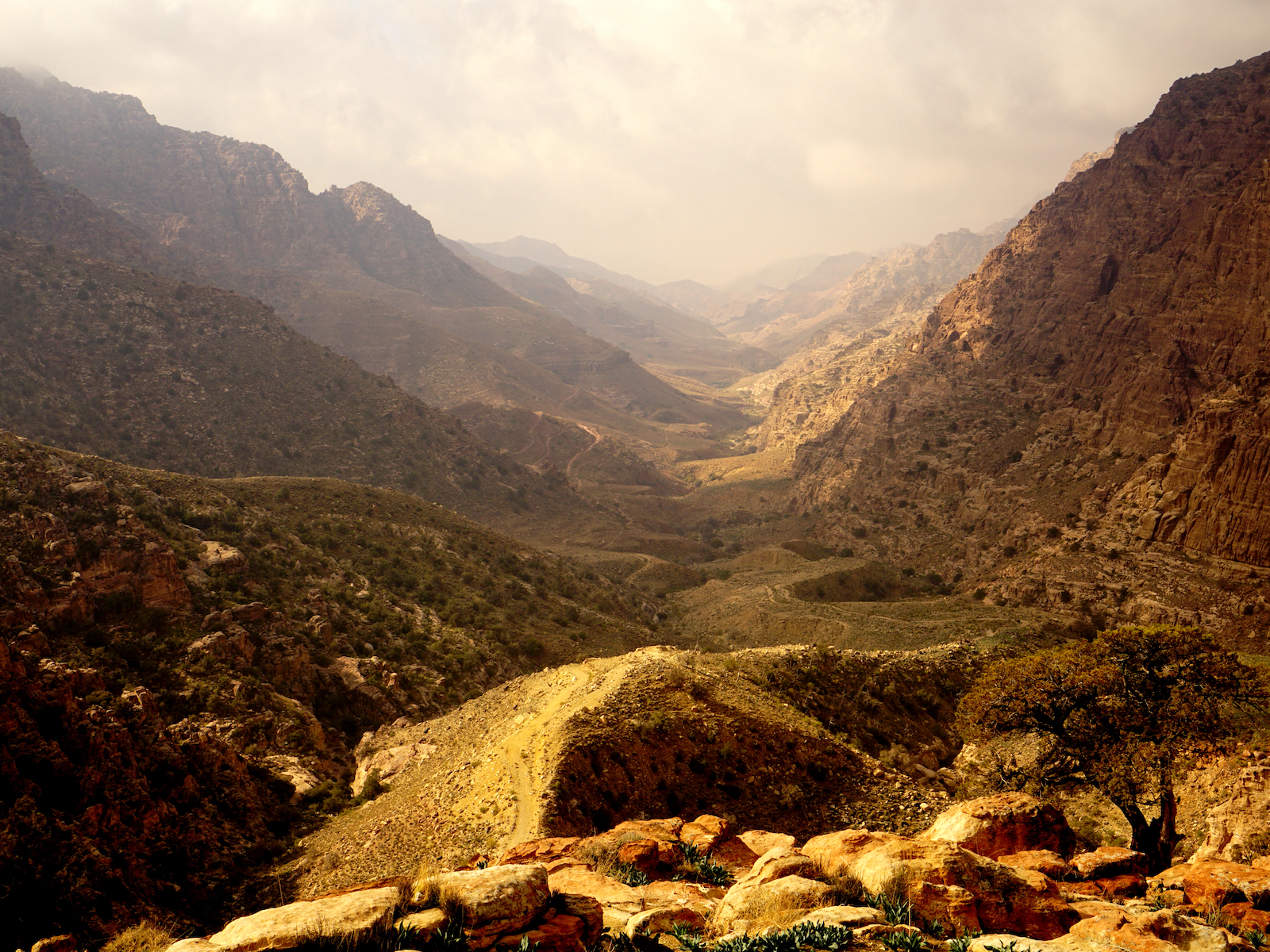
In the early days on the trail we scoffed at the suggested distances, some days of which were only 10 miles — a distance we could usually walk in a little over 3 hours. However, our first double day of punishing mountain hiking and trail finding in some of the wilder areas of Jordan’s north went a long way towards convincing us of the wisdom of the trail-makers’ planned route. We often found ourselves confused by the trail notes. Just as often, the GPS led us to the only way through a mountain pass or down a steep canyon.
Everywhere we went we were greeted by the same response. The faces differed from weathered farmers and goat herders of the north, to the kohl-eyed Bedouin and townspeople of the south, but the questions remained much the same. Where are you from? Where are you going? You walked from there? But it’s cold/wet/raining/far. Where will you sleep? Would you like a cup of tea?
This last question, typical of Jordanian hospitality, was by far my favorite. If we had time we would duck into homes we passed for tea, coffee or sometimes a light meal. Unfortunately, due to the short winter days and challenging stages, we often had to turn down invitations, struggling for the right words to convey our gratitude and apology. Often, if they found out that we were sleeping in a tent and it was near evening, people would insist that we stay in their homes.
Like this we gained a picture of Jordanian life, of the close-knit extended families, of the importance of hospitality and the rarity of foreign guests. I did my best in my broken Arabic to answer their questions and ask some of my own. Often the days ended happily in creative gesticulation and confusion.
Even when we wanted to camp, we found it hard to find anywhere to put our tent, especially in the crowded north. Almost all of the land is claimed, and it is unusual and considered dangerous for people to sleep outdoors. Add to this the fact that hospitality laws meant that allowing us to camp without offering us a place to sleep indoors was unthinkable, and we spent most nights in civilizations with a host.
Too often I was afraid we have caused inconvenience to these people, many of whom did not have much, but who shared the best of everything with us. To the grubby hiker, windswept and unshowered, to be served by the family matriarch on what was clearly the best china, and to be seated next to the stove and warmed with blankets and kindness, was like wandering into another world. I am filled with gratitude to the families that hosted us and in awe of a culture so giving to strangers.
To my great surprise it was the people who I will remember more from this trip than anything else. The young girl in the bright pink hijab, correcting her father’s English in a whisper so he could pretend to have thought of it himself, the old blind Saudi man, concerned that we had not been offered tea, and my own traveling companions, two of whom I had not really known before this trip, but all of whom quickly became a family to me as we shared all of the absurdity and the beauty of a long hiking trip in a country where hiking is rare.
Every trip has a few adventure stories — moments that stand as asterisks to a carefully laid plan that years later are brought up nostalgically over pints. We had a moment like that every day because every day it was as though we lived twice: once in the mountains on the trail, just with ourselves and what we carried, and once at night in the towns, stumbling over Arabic conjugations and appropriate manners or camping out under a sea of stars in the desert.
Every day I found myself in a situation that would seem unthinkable in another context. There was the day we were lost in the canyons outside Petra, saved by a Bedouin and hauled into town with a police escort. Or the time a kindly local woke us up in the middle of the night at our tent miles away from civilization to check if we needed water or food. Christmas Eve we spent in a Bedouin cave, preparing a meal and swapping riddles. The next day we bid Christmas farewell from a seat on a rescued sofa near a camel graveyard in Wadi Rum, drinking hot toddies and looking at the stars.
“A lot of people talk about length of experience but fewer seem to emphasize depth. Walking these weeks, I really got a sense of this place,” my friend Jordan mused on our last evening together.
It was impossible not to agree with him. I have seen many sunsets, but there have been very few moments in my life like watching the sun go down over the slightly dusty horizon, the misty mountains in the distance, as Wadi Rum turned from blue and tan to gold and navy. Or the last sunset from the top of the last mountain where we watched the sky turn lavender over Egypt, or maybe Israel, and thought about everywhere we had been and everywhere yet to come.
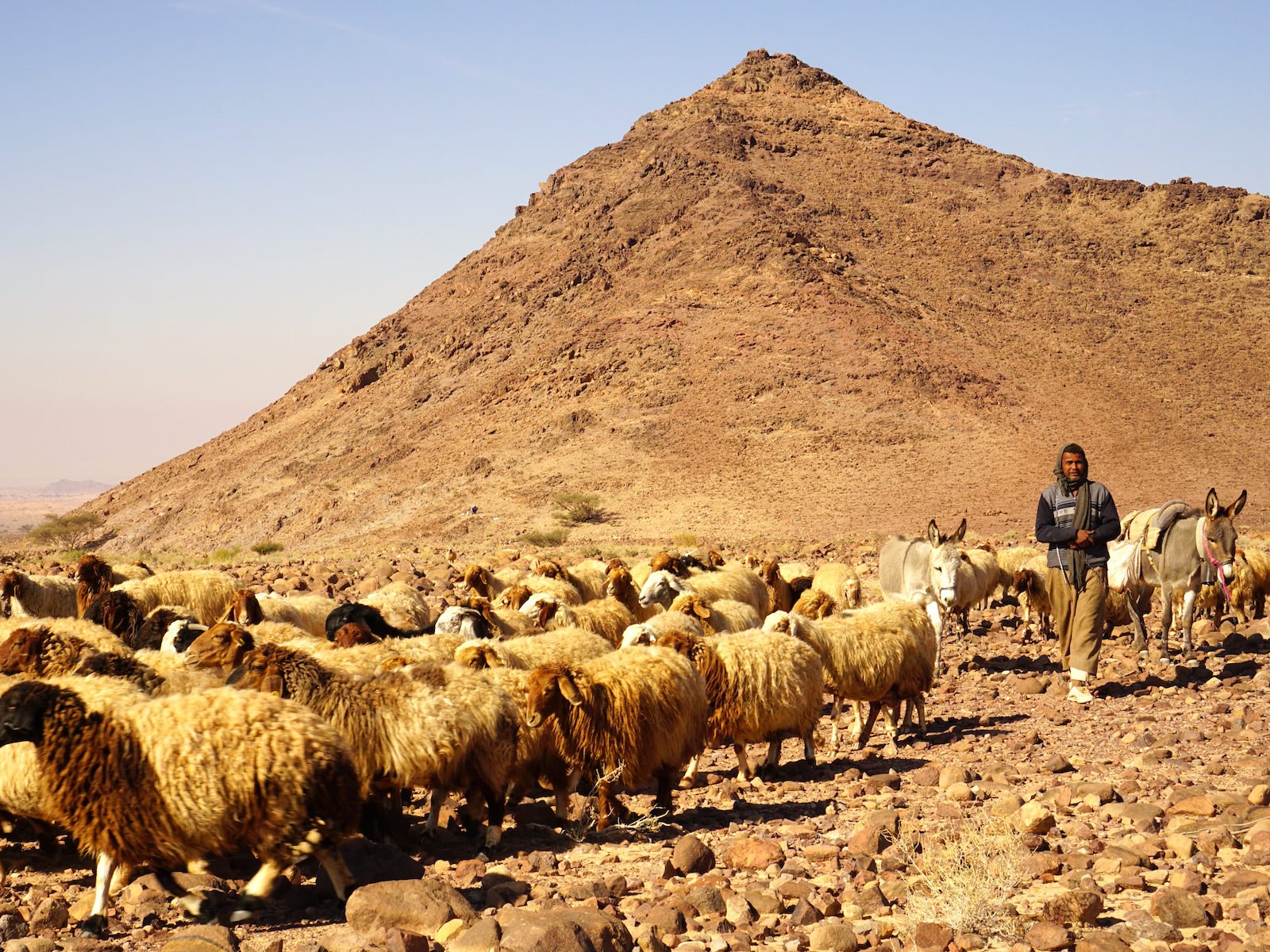
We ended up walking just under half of the official distance of the Jordan Trail, strategically interspersed with public transit stages and some private transfers to make the most of our time, but the feeling of that first rush of the Red Sea erasing the dirt of the desert, was no less sweet because of it.
We started our trip with a plan to push ourselves to complete the whole trail in a limited time with carefully planned notes and stops. But the truth is that purists always miss something, whether it is a game of Frisbee at sunset or a day spent canyoning in Wadi Rum. Work and school pulled us back to our homes, but our three weeks hiking across Jordan could have been a year. To future through-hikers, the sections from Dana to Petra and Wadi Rum to the Red sea are some of the most visually stunning areas we walked in, although the former is definitely the more challenging of the two.
As I look back on it now, it seems a sort of grand adventure, of the kind you would only find in books, the kind we are told no longer exists in society where answers are a click away. It was, in a way, as though we blazed our own Jordan trail. We started in Umm Qais and found ourselves in Aqaba many weeks (and adventures) later. We scaled mountains and crossed deserts and finally found our way to the sea, with help from strangers as we went.

 Leah Matchett is a Masters student at the University of Oxford, where she studies International Relations and occasionally escapes into the real world to go on really long walks.
Leah Matchett is a Masters student at the University of Oxford, where she studies International Relations and occasionally escapes into the real world to go on really long walks.
The post After Trekking The Jordan Trail, Nothing Was The Same appeared first on The Expeditioner Travel Site.
]]>The post What’s It Like Traveling In Jordan? appeared first on The Expeditioner Travel Site.
]]>
I don’t have a good answer for you (hopefully one day soon), but friend of our site DowntownTraveler.com (Leslie Koch) has been on a six-day trek throughout both Egypt and Jordan, checking out the pyramids, visiting Petra, and even meeting John McCain (yeah, I hate when I run into him too during my travels).
Check out her Twitter feed for past and future updates on the trip, including photos, and find out what other American political celebrities she runs into along the way. You can also check out some great photos of her trip on her Flickr stream here.
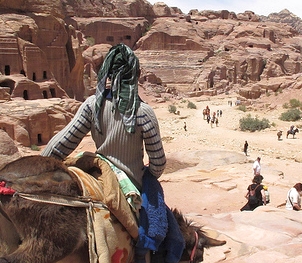
The post What’s It Like Traveling In Jordan? appeared first on The Expeditioner Travel Site.
]]>The post Traveling The Land Of Lawrence Of Arabia appeared first on The Expeditioner Travel Site.
]]>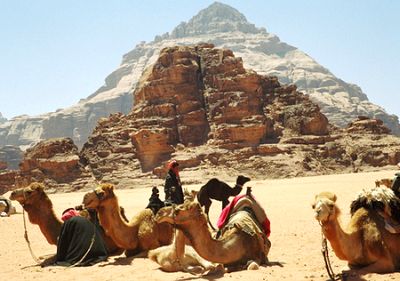
Let’s face it, “Lawrence of Arabia” is one of the best travel movies of all time. I dare you to watch this flick (and, yes, that means you’re going to have to put aside about 3 1/2 hours) and not want to pack your bags and follow in the famed footsteps of T.E. Lawrence (except, perhaps, that part when those footsteps enter that Turkish prison).
Today, that trip would entail traveling from the northern reaches of Syria to the southernmost portion of Jordan, where the country meets the Red Sea in Aqaba. Just outside of the famed city on the sea, in southern Jordan, is Wadi Rumm, or the Valley of the Moon, a swatch of land towered over by sandstone and granite outcrops, akin to Monument Valley, but, you know, not even close.
It is here that The Australian recently visited, taking in the vastness of the region, sleeping under the stars in the surprisingly cold night air, and bumping into local Bedouin nomads, a people whose hospitality is unmatched in the world — even with interloping Aussies who stumble upon random tents in the desert.
[A]lthough we intend only to ask directions, Ouda’s younger brother Ali gently insists we take tea. It would be churlish to refuse and besides, after a chilly night spent under the stars in a remote corner of the wadi, this traditional Bedouin hospitality is welcome.
Then Ouda materializes and lays out mats. The extended family joins us: Ouda’s wife and four young children, his mother, his mother-in-law and his grandmother. The other menfolk are out on the wadi tending their goats. Ali produces a venerable aluminum bowl and fills it with cold water.
He washes the glasses methodically, then pours the steaming tea from a blackened kettle. We drink gratefully. Despite our protestations, the family will not drink until we drain our second glass.
The post Traveling The Land Of Lawrence Of Arabia appeared first on The Expeditioner Travel Site.
]]>The post Threatened Wonders: 8 Spots Needing Some TLC appeared first on The Expeditioner Travel Site.
]]>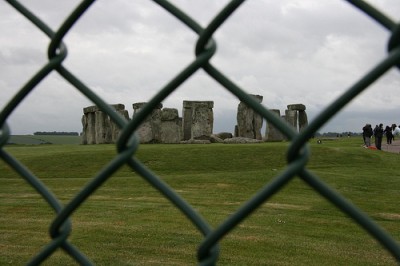
Stonehenge: A “national disgrace.” Did I miss something?
I’ve never thought of the remarkable prehistoric wonder as such, but a committee involved with the globally-known monument recently described it that way (as well as the Guardian and the Telegraph). The reason is that the million or so people who travel there each year are now forced to pay a fee and walk from their spot to a remote viewing platform near the noisy junction of two highways. Throwing elbows to catch a glimpse of the the circle doesn’t really appeal to me, either.
There are seven other destinations highlighted by Wanderlust that are threatened by too many people, bad planning, and poor security. The kicker? This is their second list. Are we beginning to lose too many places?
Picture this. Tulum, Mexico. The 1970’s peaceful Mayan fishing villages versus the “Girls Gone Wild”-Cancun ridiculousness. Nuff said.
The desert outside of Wadi Rum, Jordan, is being pummeled by the hodgepodge of tours seemingly playing by their own sets of rules. Yangsao, now a fixture on the Chinese tour group itineraries, is being run over by the over 3 million people visiting a year. Although biking is still a way to find some quiet, locals have sold out to entrepreneurs selling hordes of trinkets, and much of the cities charm in the meantime.
Despite surviving wars and earthquakes, Machu Pichu wasn’t designed to handle 2,500 people a day. The damage has led to its listing on the World Monument Fund’s endangered 2010 Watch list. Timbuktu is nearly off limits due to security concerns. The increased water usage at the golden fort in Jaisalmer, India, is literally dissolving the city’s sandstone foundations. Rough Guides describes the Bay of Fires in Tasmania, Australia, as a, “free for all.” Need I continue?
There is a silver lining, though. (Come on, I couldn’t leave you with too negative of a post.) The other side of the coin, destinations on the up-and-up, are on the rise. So, until the others get straightened out a bit, I would recommend the following.
With increasing economic and political stability, and paired with incredible safaris that have weathered the hard times, Zimbabwe is back. Northeast Thailand is still the biggest bang for your buck, and you can take full advantage of the 15% drop in visitors the region has recently experienced. Lastly, Madagascar’s increasing eco-tours are providing money for the locals as well as informally policing the wilds.
There’s still hope.
The post Threatened Wonders: 8 Spots Needing Some TLC appeared first on The Expeditioner Travel Site.
]]>The post Get Ruined In Jordan appeared first on The Expeditioner Travel Site.
]]>
I am always leery of reading about the Middle East as a travel destination. I should know better, the volatility doesn’t engulf the entire region, and once you’re there, you are guaranteed to experience a history dating back to before Western civilization was even thought of, sprinkled with some modern luxuries.
In this Travelmag article, the author takes us to the capitol of Jordan, Amman, to well kept ruins and mountains mentioned in the Bible. Not your thing? Check out the art galleries, or take a load off at one of the numerous resort spas. How about a trek past golden domed mosques set against thriving banana plantations on the banks of the Dead Sea? Intriguing, eh?
The best thing about it, while everyone else is stuck in lines outside the ruins of Italy or Greece, you will have a virtually queue free experience whether you are seeing ruins, or relaxing in the luxuries among the ruins. Are you saying I get to do all of this and battle fewer people along the way? That’s enough to convice me. I’ll see you there.
*Picture by ccarlstead
The post Get Ruined In Jordan appeared first on The Expeditioner Travel Site.
]]>The post Petra: A Must-See Before You Die appeared first on The Expeditioner Travel Site.
]]>
Unknown to the Western world until 1812 (and to popular culture until 1989 thanks to Indiana Jones), Petra was “discovered” by Sheikh Ibrahim Ibn Abdallah, or Johann Ludwig Burckhardt, as his friends liked to call him back in his ‘hood in Switzerland.
Today, this Nabataean caravan-city is one of the seven new wonders of the world, and is truly one of those boxes you need to check off of places to see before you die.
Not one for getting a little sweaty and dirty on your trips? Petra’s probably not for you, as is described in this article in the Telegraph. “The sheer scale of the site makes the most lasting impact. It spreads over seven square miles, and its sand and limestone geology upstages even the blurred, wind-eroded grandeur of the rock hewn, classical tomb and temple façades.”
I re-watched “The English Patient” this weekend (and I’m not ashamed to admit it), and every time I do, it makes me want to visit the deserts of North Africa and the Middle East more and more, despite the fact that the main characters end up dying as the result of a plane crash, horrific internal injuries, and fatally severe skin burns. What can I say, I’m a romantic?
The post Petra: A Must-See Before You Die appeared first on The Expeditioner Travel Site.
]]>